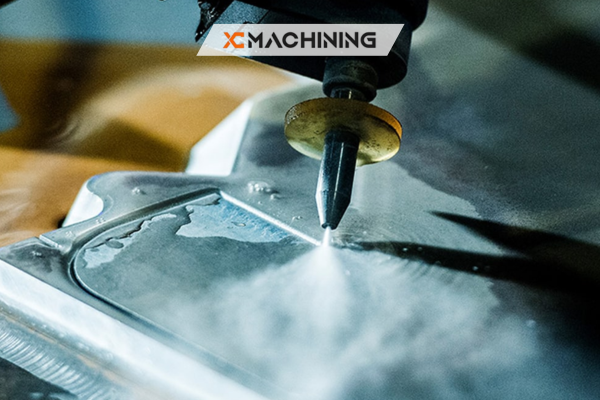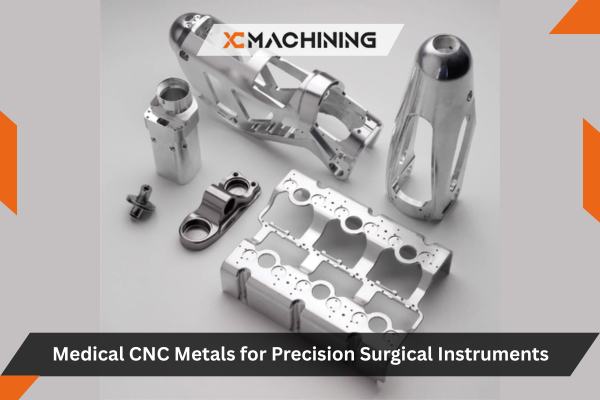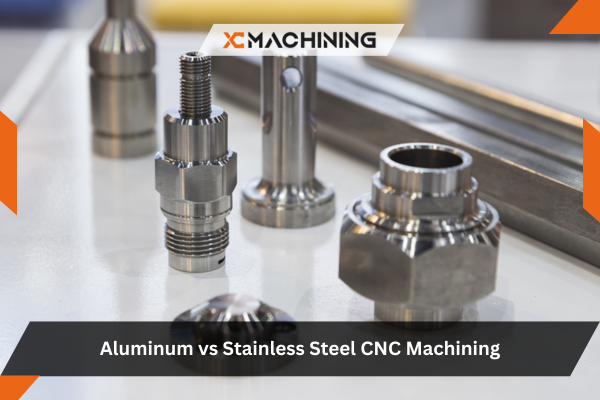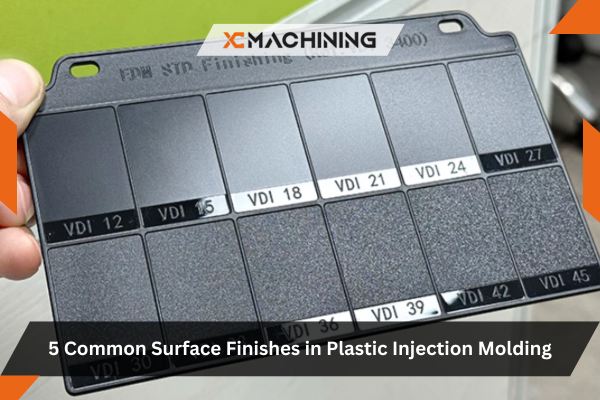Waterjet cutting services have exploded in popularity because they slice through metal, stone, glass—even rubber—without ever heating them up. If you’ve wrestled with warped edges, burnt finishes, or costly post-machining on other methods, you’re in the right place. Today, we’ll unpack why a jet of water mixed with garnet can out-perform lasers or saws while protecting both your budget and your sanity.
Success Box: In short, waterjet cutting services shoot high-pressure water (often mixed with abrasive) to create cool, burr-free cuts in almost any material. You get tight tolerances, zero heat-affected zones, and crisp edges without secondary finishing—saving time, money, and headaches.
Over the next few minutes, you’ll learn how the process works, which materials shine, cost drivers to watch, and how to pick a trustworthy shop. By the end, you’ll be confident ordering parts that drop straight from table to assembly.
Waterjet Cutting Services: Know Water As A Cutting Tool
Water may look gentle, but pump it to 60,000 psi, and it turns into a micro-saw that is able to chew through stainless plates or carbonate foam. In waterjet cutting services, a pump pressurizes water, a diamond orifice focuses it into a hair-thin beam, and a mixing tube can introduce garnet for tougher jobs. Because no heat enters the part, grains stay unchanged, and edges stay true—ideal for aerospace, art, and everything in between.
How The Pump Creates Power
At the heart sits an intensifier that converts motor horsepower into fluid pressure. Hydraulic pistons squeeze water into a small chamber, ramping pressure far above what garden hoses—or even car washes—ever see. High-grade seals and sapphire seats keep leaks at bay while the system runs for thousands of hours.
From Orifice To Kerf: The Nozzle Assembly
The pressurized stream exits a 0.1 mm-wide jewel orifice at supersonic speed. When abrasive is needed, a venturi effect pulls the garnet into the water column, turning it into liquid sandpaper. The resulting kerf averages 1 mm, letting shops nest parts tightly and save raw stock.
Motion Control And Programming
CNC gantries move the head over the workpiece with ±0.03 mm precision. Today’s controllers import DXF or STEP files, apply lead-ins, and compensate for the slight taper of the jet—so the final part matches CAD without operator guesswork.
How Waterjet Cutting Beats Traditional Saws

Sure! Here’s your revised paragraph with the focus keyword “Waterjet cutting services” used three times naturally and effectively for SEO:
Waterjet cutting services offer a superior alternative to traditional cutting methods. Hand saws and mechanical shears battle friction, which heats blades, dulls edges, and distorts delicate geometries. In contrast, waterjet cutting services maintain the material’s microstructure, eliminating the need for stress-relief cycles. They can also slice through composites that would typically delaminate under rotating tools. With the ability to pierce materials without pre-drilling, setups take only seconds. Thanks to the jet’s instant direction changes, you can create intricate inlays, gear teeth, or one-off artistic pieces without changing tooling. Overall, waterjet cutting services result in faster project completion, cleaner cuts, and significantly less scrap—making them the preferred choice when versatility, precision, and speed are essential.
Info Box: Pure-water jets (no abrasive) excel at foam, food, and plastic—keeping equipment oil-free for sanitary industries.
Why Heat-Free Means Stress-Free Parts
Every degree of heat expands metal a tiny bit. Lasers or plasma can turn that expansion into warping, especially on thin sheets. Precision waterjet cutting keeps the workpiece at room temperature, so holes remain round, and flatness stays within tolerance. That zero-heat edge also prevents microscopic cracks that later trigger premature fatigue. For aerospace brackets or biomedical fixtures, this “cold-cut” advantage equals longer component life and fewer warranty calls.
Quick Tip: If your drawing shows a tight flatness spec (≤0.1 mm/100 mm), ask your waterjet cutting company to skip tabbing so the sheet relaxes naturally after the final pass.
Materials That Love Waterjet Treatment
Aluminum, titanium, tool steel, marble, Kevlar, carbon fiber—the list keeps going. Even heat-sensitive alloys such as Inconel or hardened tool steel benefit from custom waterjet cutting, avoiding softening at the edge. When engraving logos into granite or trimming laminated glass, the jet leaves clean edges without micro-chipping. Engineers often default to laser on steel under 6 mm, but above that thickness, the waterjet’s taper control and the absence of oxide make it the smarter pick.
Fact Box: Glass cut on a waterjet stays under 60 °C—cool enough to touch immediately after the pierce.
Tolerances And Surface Finish You Can Trust
Modern pumps maintain ±3 % pressure stability, letting shops hit ±0.05 mm accuracy on metals under 12 mm. Surface finish depends on cut speed: slower passes polish the edge to ~3.2 µm Ra, while faster feeds create a slight “striation” suitable for hidden parts. Waterjet cutting for metal parts often pairs a slow finishing contour with a faster rough slug removal, balancing budget and beauty.
Standard Finish Guide (Table)
| Material | Thickness (mm) | Typical Tolerance (mm) | Edge Finish (Ra µm) | Common Use |
|---|---|---|---|---|
| Aluminum 6061 | 6 | ±0.05 | 3.2 | Automation plates |
| Stainless 304 | 12 | ±0.07 | 4.0 | Food-grade panels |
| Carbon Steel | 25 | ±0.10 | 6.3 | Structural gussets |
| Titanium 6-4 | 8 | ±0.05 | 3.2 | Aerospace brackets |
Suggestion: Request a finish code (“Quality 3” vs. “Quality 5”) when getting quotes so suppliers match expectations to budget.
Design Tips For Waterjet-Ready Drawings
Rounded interior corners (radius ≥1 mm) prevent excessive dwell that erodes features. Offsetting slots by the kerf width lets parts drop out cleanly. When stacking thin sheets, tab sections lightly to stop parts from tipping into the stream. Many CAD plugins calculate kerf automatically but confirm the nozzle diameter with your waterjet cutting company to avoid surprises.
Danger: Snug nests maximize sheet use, yet leave at least 3 mm web between parts, or the jet can hop, ruining edges.
Choosing Abrasive Or Pure Water Streams
Pure water cuts soft goods at up to 30 m/min, perfect for gasket houses. Add 80-mesh garnet, and the machine will chew 50 mm stainless steel, but the feed drops to 1 m/min. Mixing abrasive also increases cost and cleanup time. Evaluate part volume, hardness, and finish to decide. A reputable provider of waterjet cutting services will run test coupons so you see both outcomes before committing.
Cost Factors Every Buyer Should Know
Waterjet cutting services rates combine pump hours, abrasive use, consumables, and programming. A thicker plate means slower feed and higher abrasive mass (≈0.4 kg/min). Tight tolerances increase dwell and edge quality passes. Delivering flat DXF files, grouping identical parts, and allowing shared cuts slash minutes off runtime—sometimes halving your final invoice. In most regions, Waterjet cutting services start at around $100/hour in machine time, but optimized nests can pull the cost per part below the laser in small batches.
Warnings Box: Re-cutting warped plates adds pump cycles and nozzle wear; inspect incoming stock to avoid hidden dents or mill scale.
Selecting The Right Waterjet Cutting Company
Look for ISO 9001 or AS9100 certification if your parts enter regulated sectors. Ask about pump horsepower: 60 k ratings slice faster, but ultra-high-pressure systems (>90 k) unlock thicker titanium. Check if the shop offers in-house CAD support and post-cut deburring—a full-service waterjet cutting company simplifies supply chains. Finally, read reviews for on-time delivery; precision is worthless if the crate arrives late.
Quality Checks That Protect Your Project
A good shop records water hardness, abrasive mesh, and nozzle hours, then tags jobs with batch data. They’ll measure the first-article pieces using CMM arms and inspect taper compensation. For precision waterjet cutting, a micro-edge burr under 0.02 mm indicates healthy orifice alignment. Reviewing these metrics upfront neutralizes surprises when assemblies reach the line.
From Prototype To Production Scale

Need ten test brackets today and ten-thousand next month? Waterjet excels at both. You can iterate hole patterns in minutes, email a new DXF, and have the operator start the next run without re-jigging fixtures. Once specs lock, nests scale across multiple heads or multi-shift schedules. This agility gives startups muscle to compete with enterprises—another reason savvy engineers rely on waterjet cutting services for metal parts when launch windows are tight.
Conclusion
Nothing beats the cool, crisp edge of waterjet cutting services when your design demands accuracy without heat scars. You’ve seen how the process preserves material integrity, handles everything from Kevlar to granite, and keeps budgets happy by merging prototyping and production on the same table. Whether you need custom waterjet cutting for intricate art, precision waterjet cutting for aerospace, or rugged waterjet cutting for metal parts, partnering with a seasoned waterjet cutting company will keep your project on track and your parts rock-solid.
FAQs
How Thick Can Waterjet Cut?
Industrial heads with 90 k psi pumps routinely pierce 200 mm stainless steel, though feed rates slow dramatically above 100 mm.
Does Waterjet Cutting Leave A Taper?
Yes, but modern software tilts the head to compensate, achieving near-parallel walls on most geometries.
Is Waterjet Eco-Friendly?
It uses only water and natural garnet; no fumes or dross. Reclaimed abrasive can be recycled in construction filler.
What File Formats Do Shops Accept?
DXF, DWG, and STEP are standard. Clean 2D geometry reduces setup time and cost.
Do I Need Secondary Machining After Waterjet?
Usually not. Edges are burr-free; however, tapped holes or countersinks still require drill-press or mill operations.





